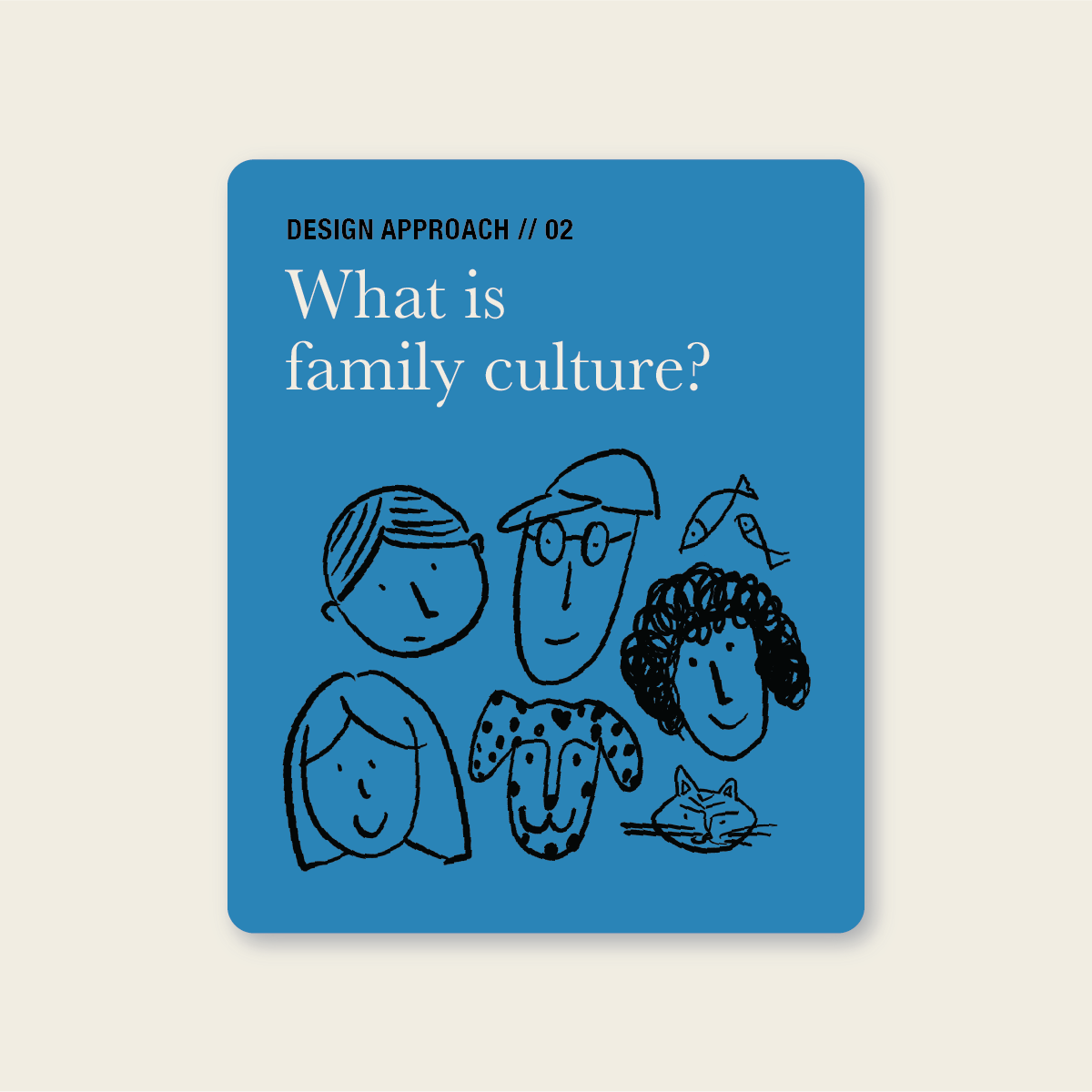What is Family Culture
Family culture isn't just about what we say is important. It's what gets lived, shared, and reinforced every day.
Every family has a culture whether they consciously shape it or not. It influences everything from how we think, speak, resolve conflict, spend our time and celebrate together. At its core, family culture is the shared values, beliefs, norms, and habits that guide how a family thinks, feels, and behaves. It shows up in the small things like, what we say yes or no to, how we spend our weekends, what gets recognised, and how we act when things get hard. It is the difference between “What can I do to help?” vs “What’s your problem?”, “Let’s figure out how to make the hard thing easier to do” vs “Just do what’s easier”.
Family culture is formed over time through repeated moments. And most of the time, we don’t even realise it’s happening. We all come into parenthood with inherited habits, influences from our upbringing, and now, a constant stream of advice from the internet. We often end up living by a mashup of rules, scripts and thoughts from others that we think are good ideas at the time. But when our kids challenge us, we do not have a good enough reason behind our decisions beyond, “because I said so.”
Reflecting on family culture is powerful. It gives us a chance to pause and ask:
What kind of environment are we really creating? Is it helping us grow closer or just helping us get through the day? What skills and mindsets do we all need to adopt? What is stopping us from moving forward and what do we need to unlearn?
What Shapes Family Culture?
Here are a few core elements:
Values: What truly matters to us? (e.g. kindness, honesty, fun, learning?)
Visible Behaviours: How do we speak, act and respond according to our values?
Invisible Structures & Norms: What’s expected without constant reminders? (habits, routines, shared understanding)
Physical Environment: How do we use our space to support our values?
These elements are shaped by our personalities, backgrounds, experiences, with each of us bringing in our own unique contribution to the mix. While we cannot control the behaviour of others, most of these are designable, especially our own behaviours, and the environment we create.
How does it help?
A strong, intentional family culture gives you something to anchor to. It becomes the invisible guide when life gets messy (which it always does). It can:
Make everyday decisions easier
Reduce conflict and confusion
Help kids feel secure and understood
Support your long-term goals as a family
This is not about designing humans or shaping children into perfect versions of what we think they should be. It’s about intentionally shaping the environment they grow up in. One that reflects your family’s values, supports emotional safety, and allows everyone, adults included, to learn and grow together.
So, Where Do We Start?
We don’t need to create a family manifesto to begin. We just need to start noticing our environment and think about:
What do we truly value?
What do our current patterns say about what we value?
What moments do we share now that are highly valuable?
What would we love to see more of at home?
Start having these conversations about them at home. Experiment with small shifts, observe changes, adjust as you go. This is where a human-centered approach can help us listen more deeply, notice what’s really going on, involve everyone, and design around what matters.
Related:
How Strategy, Approach, and Form Work Together to Shape Family Culture
The Life Skills Families can Build through Human-centered Design
Read all posts on Design Approach to Family Life and Human-centered Design.





